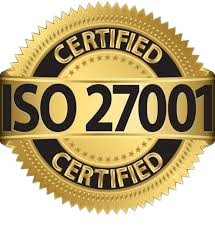GST RETURN FILING CHANGES FROM 1st OCTOBER 2025
The Central Board of Indirect Taxes and Customs (CBIC), through Notification No. 16/2025–Central Tax dated September 17, 2025, has notified October 1, 2025, as the effective date for key provisions of the Finance Act, 2025, ushering in major reforms in GST return filing. These changes will reshape how businesses verify invoices, claim Input Tax Credit (ITC), and file GSTR-3B returns.
A key amendment to Section 39 mandates generation of GSTR-2B through the new Invoice Management System (IMS) before filing GSTR-3B, ensuring mandatory invoice verification. Additionally, amendments to Section 34 state that a supplier’s tax liability cannot be reduced through a credit note unless the recipient has reversed or not availed of the related ITC.
The revised framework aims to improve accuracy, curb fraudulent claims, and strengthen tax compliance. This article explains the key changes, their impact on businesses, and how to prepare for a smooth transition under the new GST system.
Three key changes in GST return filing— crucial for managing accounts or GST compliance.
1. END OF AUTO-POPULATION OF INPUT TAX CREDIT (ITC) IN GSTR-3B
Input Tax Credit (ITC) is the credit businesses get for GST paid on their purchases. It helps reduce the GST they owe on sales.
For example, if you paid ₹10,000 as GST on purchases, you can claim that ₹10,000 as credit against your GST liability on sales.
GSTR-2B is a monthly auto-generated statement listing all purchase invoices reported by your suppliers, providing a clear view of the Input Tax Credit (ITC) you are eligible to claim.
GSTR-3B is a monthly summary return filed by businesses to declare outward supplies, inward supplies, claimed ITC, and the net GST liability payable to the government.
Existing System until Now
Until now, the GST system automatically filled in ITC details from a report called GSTR-2B when you filed your GSTR-3B return. This automatic filling, called auto-population, saved time and effort.
Key Changes
From October 1, 2025, this auto-population of ITC from GSTR-2B to GSTR-3B will stop. You will have to:
• Manually access your GSTR-2B report,
• Verify the invoices listed there,
• And then manually enter the eligible ITC in your GSTR-3B return.
Need for this Change
The manual step ensures you verify and reconcile your input credit carefully instead of blindly relying on auto-population. It will reduce mistakes, mismatched claims, and tax fraud.
2. MANUAL GENERATION OF GSTR-2B THROUGH INVOICE MANAGEMENT SYSTEM (IMS)GSTR-2B is a monthly GST report showing all purchase invoices reported by your suppliers. It tells you the ITC you can claim for a particular month.
The Invoice Management System (IMS) is a new platform where you can accept or reject purchase invoices reported by your suppliers.
• Accepting an invoice means you confirm it is correct and want to claim ITC on it.
• Rejecting an invoice means you dispute it and will not claim ITC on it.
Existing System until Now
Earlier, the system automatically generated GSTR-2B every month based on supplier data.
Key Changes
From October 1, 2025:
• GSTR-2B will not be generated automatically anymore.
• You must log in to IMS, review each invoice, and accept or reject it.
• Only after this acceptance/rejection process will GSTR-2B be generated.
• The data from GSTR-2B will then be transferred to GSTR-3B for your ITC claim.
Need for this Change
It forces businesses to actively verify their invoices before claiming ITC. This minimizes errors and tax evasion.
3. CHANGES IN TAXABILITY OF CREDIT NOTES AND MANDATORY INVOICE ACTION
A credit note is a document issued by a supplier to correct or reduce an earlier invoice (for example, if goods were returned or discount was given).
Existing System until Now
Suppliers could reduce their output tax liability by issuing credit notes. Recipients could claim a lower ITC accordingly.
Key Changes
• If a recipient rejects a credit note in IMS, the supplier’s output tax liability will NOT reduce.
• Instead, the supplier must add back that tax amount and pay GST on it.
• This rule is under Section 34 of GST law.
• Additionally, you cannot file your GSTR-3B without first generating GSTR-2B, which requires accepting or rejecting invoices in IMS.
• This is mandated through an amendment to Section 39(1).
Need for this Change
This ensures that both suppliers and recipients mutually agree on credit notes and corresponding ITC claims, thereby preventing disputes and misuse.
Advantages of the New System
• Improved Accuracy: Manual verification reduces errors and incorrect claims.
• Better Control: Taxpayers have more control and responsibility in claiming ITC.
• Reduced Fraud: Stricter invoice verification prevents fraudulent ITC claims.
• Fair Taxation: Credit note disputes will be resolved more transparently.
• Greater Compliance: Mandatory steps ensure that all parties agree on tax documents.
KEY TAKEAWAYS
These reforms mark a major shift from automated to manual, verified GST filing, enhancing accuracy and accountability. While these changes may require more effort upfront, this approach will create a cleaner, more compliant GST ecosystem that benefits both businesses and the government.
Effective October 1, 2025, GST return filing will move away from automatic ITC auto-population to manual invoice acceptance via the Invoice Management System (IMS). This empowers businesses to carefully verify claims, reducing errors and preventing fraud.
The updated rules on credit notes ensure mutual agreement between suppliers and recipients on adjustments, minimizing disputes and improving compliance. Supported by amendments to Sections 34 and 39, these changes promote transparency and fairness in GST filings.
We offer comprehensive support for GST compliance—helping you navigate the IMS, reconcile invoices, manage credit notes, and file your returns accurately, efficiently, and on time.
With TAXOSMART, your tax return is in safe hands.
Stay informed, stay transparent—and most importantly, stay stress-free. Let us help you file smart and secure your financial peace of mind.
DISCLAIMER
The information contained in this document is prepared by R.J. Soni & Associates and TaxOSmart LLP (hereinafter referred to as RJSA) for information purpose only. It does not constitute any legal advice or tax advice. In no way, this document should be treated as a marketing material or efforts to solicit a client. While we have made every attempt to ensure that the information contained in this document is true, RJSA, its partners and/or any of its employees make no claims / guarantee about its accuracy, completeness, or up-to-date character, or warranty, express or implied, including the warranty of opinions expressed for a particular purpose, or assume any liability or responsibility for the accuracy, completeness, or usefulness of any information available from this document.
A key amendment to Section 39 mandates generation of GSTR-2B through the new Invoice Management System (IMS) before filing GSTR-3B, ensuring mandatory invoice verification. Additionally, amendments to Section 34 state that a supplier’s tax liability cannot be reduced through a credit note unless the recipient has reversed or not availed of the related ITC.
The revised framework aims to improve accuracy, curb fraudulent claims, and strengthen tax compliance. This article explains the key changes, their impact on businesses, and how to prepare for a smooth transition under the new GST system.
Three key changes in GST return filing— crucial for managing accounts or GST compliance.
1. END OF AUTO-POPULATION OF INPUT TAX CREDIT (ITC) IN GSTR-3B
Input Tax Credit (ITC) is the credit businesses get for GST paid on their purchases. It helps reduce the GST they owe on sales.
For example, if you paid ₹10,000 as GST on purchases, you can claim that ₹10,000 as credit against your GST liability on sales.
GSTR-2B is a monthly auto-generated statement listing all purchase invoices reported by your suppliers, providing a clear view of the Input Tax Credit (ITC) you are eligible to claim.
GSTR-3B is a monthly summary return filed by businesses to declare outward supplies, inward supplies, claimed ITC, and the net GST liability payable to the government.
For example, if you paid ₹10,000 as GST on purchases, you can claim that ₹10,000 as credit against your GST liability on sales.
GSTR-2B is a monthly auto-generated statement listing all purchase invoices reported by your suppliers, providing a clear view of the Input Tax Credit (ITC) you are eligible to claim.
GSTR-3B is a monthly summary return filed by businesses to declare outward supplies, inward supplies, claimed ITC, and the net GST liability payable to the government.
Existing System until Now
Until now, the GST system automatically filled in ITC details from a report called GSTR-2B when you filed your GSTR-3B return. This automatic filling, called auto-population, saved time and effort.
Key Changes
From October 1, 2025, this auto-population of ITC from GSTR-2B to GSTR-3B will stop. You will have to:
• Manually access your GSTR-2B report,
• Verify the invoices listed there,
• And then manually enter the eligible ITC in your GSTR-3B return.
Need for this Change
The manual step ensures you verify and reconcile your input credit carefully instead of blindly relying on auto-population. It will reduce mistakes, mismatched claims, and tax fraud.
2. MANUAL GENERATION OF GSTR-2B THROUGH INVOICE MANAGEMENT SYSTEM (IMS)
GSTR-2B is a monthly GST report showing all purchase invoices reported by your suppliers. It tells you the ITC you can claim for a particular month.
The Invoice Management System (IMS) is a new platform where you can accept or reject purchase invoices reported by your suppliers.
• Accepting an invoice means you confirm it is correct and want to claim ITC on it.
• Rejecting an invoice means you dispute it and will not claim ITC on it.
Existing System until Now
Earlier, the system automatically generated GSTR-2B every month based on supplier data.
Key Changes
From October 1, 2025:
• GSTR-2B will not be generated automatically anymore.
• You must log in to IMS, review each invoice, and accept or reject it.
• Only after this acceptance/rejection process will GSTR-2B be generated.
• The data from GSTR-2B will then be transferred to GSTR-3B for your ITC claim.
Need for this Change
It forces businesses to actively verify their invoices before claiming ITC. This minimizes errors and tax evasion.
3. CHANGES IN TAXABILITY OF CREDIT NOTES AND MANDATORY INVOICE ACTION
A credit note is a document issued by a supplier to correct or reduce an earlier invoice (for example, if goods were returned or discount was given).
Existing System until Now
Suppliers could reduce their output tax liability by issuing credit notes. Recipients could claim a lower ITC accordingly.
Key Changes
• If a recipient rejects a credit note in IMS, the supplier’s output tax liability will NOT reduce.
• Instead, the supplier must add back that tax amount and pay GST on it.
• This rule is under Section 34 of GST law.
• Additionally, you cannot file your GSTR-3B without first generating GSTR-2B, which requires accepting or rejecting invoices in IMS.
• This is mandated through an amendment to Section 39(1).
Need for this Change
This ensures that both suppliers and recipients mutually agree on credit notes and corresponding ITC claims, thereby preventing disputes and misuse.
Advantages of the New System
• Improved Accuracy: Manual verification reduces errors and incorrect claims.
• Better Control: Taxpayers have more control and responsibility in claiming ITC.
• Reduced Fraud: Stricter invoice verification prevents fraudulent ITC claims.
• Fair Taxation: Credit note disputes will be resolved more transparently.
• Greater Compliance: Mandatory steps ensure that all parties agree on tax documents.
KEY TAKEAWAYS
These reforms mark a major shift from automated to manual, verified GST filing, enhancing accuracy and accountability. While these changes may require more effort upfront, this approach will create a cleaner, more compliant GST ecosystem that benefits both businesses and the government.
Effective October 1, 2025, GST return filing will move away from automatic ITC auto-population to manual invoice acceptance via the Invoice Management System (IMS). This empowers businesses to carefully verify claims, reducing errors and preventing fraud.
The updated rules on credit notes ensure mutual agreement between suppliers and recipients on adjustments, minimizing disputes and improving compliance. Supported by amendments to Sections 34 and 39, these changes promote transparency and fairness in GST filings.
We offer comprehensive support for GST compliance—helping you navigate the IMS, reconcile invoices, manage credit notes, and file your returns accurately, efficiently, and on time.
With TAXOSMART, your tax return is in safe hands.
Stay informed, stay transparent—and most importantly, stay stress-free. Let us help you file smart and secure your financial peace of mind.
DISCLAIMER
The information contained in this document is prepared by R.J. Soni & Associates and TaxOSmart LLP (hereinafter referred to as RJSA) for information purpose only. It does not constitute any legal advice or tax advice. In no way, this document should be treated as a marketing material or efforts to solicit a client. While we have made every attempt to ensure that the information contained in this document is true, RJSA, its partners and/or any of its employees make no claims / guarantee about its accuracy, completeness, or up-to-date character, or warranty, express or implied, including the warranty of opinions expressed for a particular purpose, or assume any liability or responsibility for the accuracy, completeness, or usefulness of any information available from this document.
Blogs



Leave a Comment
Comments 0